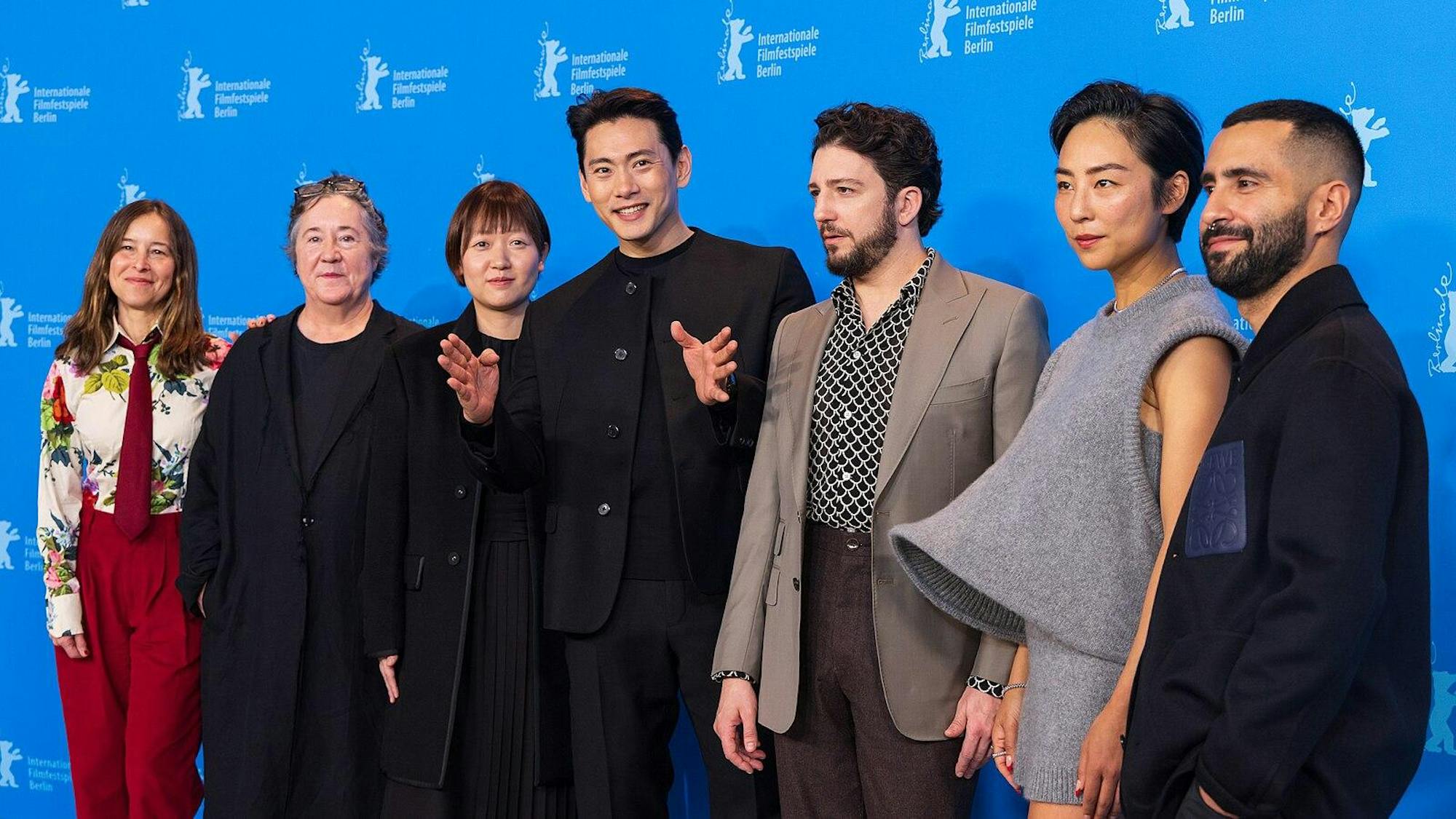Is it possible to have multiple soulmates? To ever truly move on from the past? To accept one’s life choices without wondering “what-if?”
These questions course throughout “Past Lives,” a tender, often heart-wrenching tale of destiny, human connection and the bittersweetness of change. In a year that brought “Barbie,” “Oppenheimer” and “Poor Things,” “Past Lives” feels like a breath of fresh air. It’s a reminder that good films don’t necessarily need visual “oomph” or flashy media campaigns to be impactful. A tender, emotionally resonant plot is what matters most — and this is the greatest strength of “Past Lives.”
“Past Lives” is the directorial debut of Celine Song, a playwright whose knack for crafting realistic, thought-provoking dialogue shines throughout the film’s script. The plot follows Nora (Greta Lee) and Hae Sung (Teo Yoo), childhood best friends and sweethearts who grew up together in Seoul. “I will probably marry him,” a young Nora excitedly tells her mom.
In one poignant scene toward the beginning of the film, Nora and Hae Sung’s mothers watch from afar as their children frolic together in a sculpture park, imitating the different art pieces and scrambling up the sides of installations. As a dreamy score seeps into the scene, the camera switches from the parents’ point of view to Nora and Hae Sung’s perspective, following them as they exchange knowing smiles, laughter and affectionate glances. At the end of the scene, as Nora and Hae Sung are sitting in the car, the camera shows a close-up of Nora holding Hae Sung’s hand, her head resting on his shoulder as she sleeps. It’s a brief yet powerful sequence that illustrates the depth and intimacy of Nora and Hae Sung’s connection, despite their young ages. There’s a truly special quality to their relationship — a sense of magnetism between them that feels raw and tangible.
However, the film only lingers briefly on Nora and Hae Sung’s childhood. Soon after the sculpture park scene, Nora’s family immigrates to Canada, separating her and Hae Sung until they reconnect via Skype 12 years later. Nora is now an ambitious playwright in New York City, while Hae Sung is studying engineering in Seoul after completing his military service. One wishes that the script had lingered more on their childhood connection, on their “past life” that the film’s title refers to. For a movie based on the storyline of childhood sweethearts reconnecting, the part of the film that actually depicts their shared youth in Seoul feels too brief.
Like their younger selves in the playground scene, the older Nora and Hae Sung share a chemistry that is undeniable. As they rekindle their relationship via nightly Skype calls, the talent of actors Lee and Yoo is on full display. It’s challenging to convey a believable romantic connection between two individuals who are just faces on laptop screens to each other. However, Lee and Yoo succeed in this regard, powerfully conveying the emotions of yearning, nostalgia and understanding that radiate between their characters. There is nothing contrived or forced about Nora and Hae Sung’s chemistry. Rather, it feels natural — visceral, almost.
After several weeks of calls, Nora abruptly announces to Hae Sung that she can’t talk to him anymore. She needs to focus on her budding career, and she knows that it will be years until they ever have a chance of reconnecting in person. Flash forward another 12 years, however, Hae Sung is traveling to New York City to visit Nora. The two spend several days together, reigniting a spark that both had tried to bury long ago.
During every interaction between Nora and Hae Sung, the cinematography of Shabier Kirchner captures the intimacy of their relationship without ever feeling too intrusive or in-your-face.At several points, Kirchner chooses to film Nora and Hae Sung from a distance — in one scene, they are filmed through the window of a subway car, preventing the viewer from hearing their conversation. It’s as if the camera itself is respectful of their privacy, allowing Nora and Hae Sung to share an intimate moment that only they are privy to.
This theme of “looking,” or observing from afar, runs throughout the film. During the very first scene, for instance, we observe Nora, Hae Sung and Nora’s husband from the perspective of two puzzled outsiders, who are making guesses about how the three characters are related. “Past Lives” suggests that there is something indescribable about soul-level connections, or the forces that draw two people together. At the end of the day, outsiders can never wholly understand the relationships between other human beings — an idea that is captured by the physical distance that the camera often creates between the viewer and Nora and Hae Sung.
Despite this, “Past Lives” never feels like a ‘romance’ movie. Yes, there are prominent themes of romance and love; however, Song has created a film that is about so much more. In many ways, “Past Lives” is about the futility of regret. Like Nora and Hae Sung, we will always wonder “what if” about the people, places and opportunities that have drifted in and out of our lives, remaining tethered to our pasts. But we still have to accept the choices we’ve made, rather than mulling over what could have been.
The ending scene, in which Nora and Hae Sung contemplate their future and past lives, is one of the film’s most profound moments. It’s sad without being depressing; it invites reflection more so than tears. Like the movie as a whole, it asks the viewer to be introspective — to think about their own past lives, past relationships and past choices, without regret but with contemplation.






